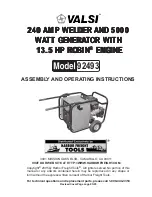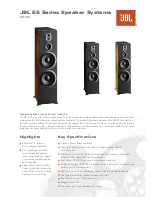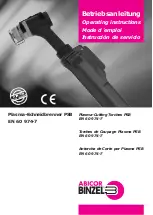
Page 8
SKU 92493
For technical questions, please call 1-800-444-3353.
• Remove or make safe all combustible materials for a radius of 35 feet (10 meters)
around the work area. Use a fire resistant material to cover or block all open
doorways, windows, cracks, and other openings.
• Enclose the work area with portable fire resistant screens. Protect combustible walls,
ceilings, floors, etc., from sparks and heat with fire resistant covers.
• If working on a metal wall, ceiling, etc., prevent ignition of combustibles on the other
side by moving the combustibles to a safe location. If relocation of combustibles is
not possible, designate someone to serve as a fire watch, equipped with a fire
extinguisher, during the welding process and for at least one half hour after the
welding is completed.
• Do not weld or cut on materials having a combustible coating or combustible internal
structure, as in walls or ceilings, without an approved method for eliminating the
hazard.
• Do not dispose of hot slag in containers holding combustible materials. Keep a fire
extinguisher nearby and know how to use it.
• After welding or cutting, make a thorough examination for evidence of fire. Be aware
that easily visible smoke or flame may not be present for some time after the fire has
started. Do not weld or cut in atmospheres containing dangerously reactive or
flammable gases, vapors, liquids, and dust. Provide adequate ventilation in work
areas to prevent accumulation of flammable gases, vapors, and dust. Do not apply
heat to a container that has held an unknown substance or a combustible material
whose contents, when heated, can produce flammable or explosive vapors. Clean
and purge containers before applying heat. Vent closed containers, including
castings, before preheating, welding, or cutting.
8.
Avoid overexposure to fumes and gases. Always keep your head out of the fumes.
Do not breathe the fumes. Use enough ventilation or exhaust, or both, to keep fumes
and gases from your breathing zone and general area.
• Where ventilation is questionable, have a qualified technician take an air sampling to
determine the need for corrective measures. Use mechanical ventilation to improve
air quality. If engineering controls are not feasible, use an approved respirator.
• Work in a confined area only if it is well ventilated, or while wearing an air-supplied
respirator.
• Follow OSHA guidelines for Permissible Exposure Limits (PEL’s) for various fumes
and gases.
• Follow the American Conference of Governmental Industrial Hygienists
recommendations for Threshold Limit Values (TLV’s) for fumes and gases.
• Have a recognized specialist in Industrial Hygiene or Environmental Services check
the operation and air quality and make recommendations for the specific welding or
cutting situation.
• Take special care when welding galvanized materials.








































